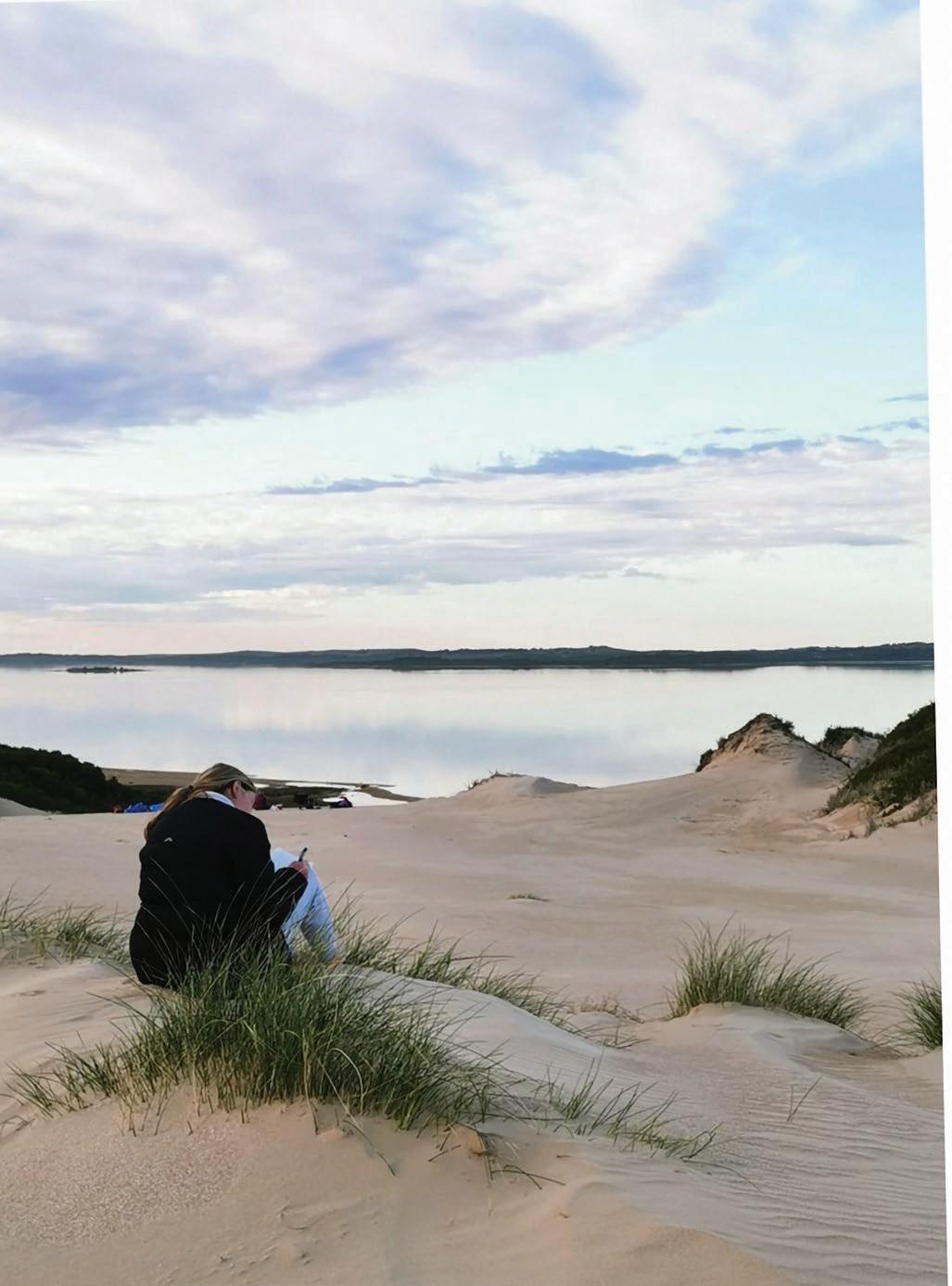
4 minute read
Low Stakes Writing
LOW STAKES WRITING ARMED WITH PURPOSE
Asking a student to recall the last time they wrote for pleasure or without the weight of assessment usually results in muffled laughter.
Advertisement
For the vast majority of our students, it does not happen. Most have abandoned the journals that they once scribbled in whilst lying belly-down on their bed. Yet, we expect our girls’ writing to be fluent, sophisticated and bold, and request that they pluck the appropriate words from a vocabulary that stretches the length of the Wilderness Parklands. Unfortunately, this takes practice, not only to acquire a vocabulary of that size, but to use it correctly. Writing is a skill and something that Stephen Heller (2015) suggests that we start treating as a verb, rather than a noun. Writing requires work. Low Stakes Writing (LSW) is the product of our girls’ writer’s block and the need for growth in this area. We hope it could also be the vaccine. Task sheets should not be synonymous with the fear of putting words on a page and while writing isn’t the only cause of this fear, it is certainly one of them. LSW is a program that provides students with weekly opportunities to hand-write in ways that are constantly varied. We aim to create agile and adventurous writers who can express themselves with confidence. Taking writing outside of the classroom is a nice place to start if we want our girls to feel like they can write with the same freedom as the 230 species of migratory birds that visit the Coorong each year.


Practicing writing atop the sand dunes of the Younghusband Peninsula on a glassy night, also makes for a nice view.
Research compiled by writing theorists such as Nicole Boudreau Smith (2017) provides ample guidance for our LSW program. Put simply, in designing a bright future for the program, we certainly do not have to feel our way through the dark like our REALISE girls do as they descend from the sand dunes to find their tents. Smith took on a review of 60 years of research in the teaching of writing to find six components of practice that we will use to inform the future focus of LSW. In Term 3, we adopted component number five; ‘Writers need social interaction, not passive compliance’ (N Smith, 2017, p.73) which exposes the way that classroom chat, believe it or not, is an integral part of writing. The heightened fervor to write that follows a rich discussion proves that writing is a social process. Peer collaboration opens up a generative discourse that allows individuals to reach new ideas in their writing that alone, they could not unlock. By focusing on this component of Smith’s writing revolution, we also hope to unpack the way that the true intention of a writer is not always realised by the responder. In testing ideas out loud, before printing them, it is hoped that the gap between intention and outcome is bridged, resulting in a lot less heartache for students who, at times, receive feedback on summative tasks that were unexpected. As we ride Smith’s components in Principled Practice throughout our LSW journey, we believe that our writers will become armed with intentionality, purpose and a clear personal voice at all times.
Weaving writing into the REALISE program, an initiative by Leah English, supports the idea that writing is not just a tool used to show the assessor what one does and does not know. It is an art form, and what better muse to inspire such art than the sweeping Coorong River. Gathered in a circle, the 15 girls from core group two discussed the joy in writing; the power that we have as young writers to encapsulate a moment that can be shared with others who were not present. That moment can be vivid and lifelike, if we can use the power of our language to make it so. In keeping with the old adage, ‘show, don’t tell’ we discussed the ways that images and feelings can be constructed. Sensory imagery is the builder of stories that we can see, touch, feel, smell and taste. As the girls dispersed throughout the dunes to find a quiet spot, we isolated each sense and in doing so, realised that it is not often that we become the audience to just one sense exclusively.
We silently recorded a live-stream of everything we were experiencing; the salty crust that had formed around our ankles and the sound of the violent waves that tore through the ocean on the other side of the peninsula. As we regathered, the sensations that were tapped into began to pour out into the circle of students. We scooped up the metaphors, analogies, and symbols and trickled them into recounts of our journeys that day. The girls’ writing was stimulating, vivid and outrageously real.
The sense of adventure required to write without fear of judgement is not often discussed.
It takes courage to put something in writing; to print the inner workings of one’s mind for all to see.
In pairing writing with outdoor education; where girls learn to take responsible risks and demonstrate real world application of their learning, it is our hope that we can transfer the resilience, strength and bravery that we see on a stormy kayaking expedition, to the same girl when she has pen in hand.
Billie Newton Teacher
Heller, S. (2015). Teaching writing, rather than writings. English Journal, 104(5), 12.










